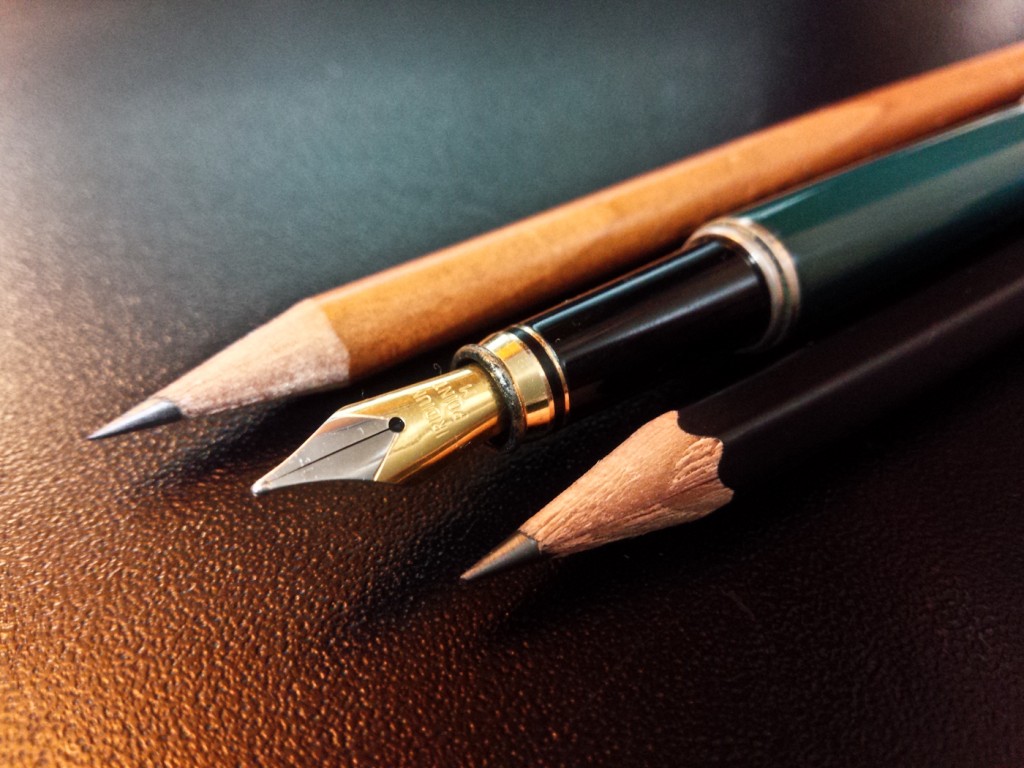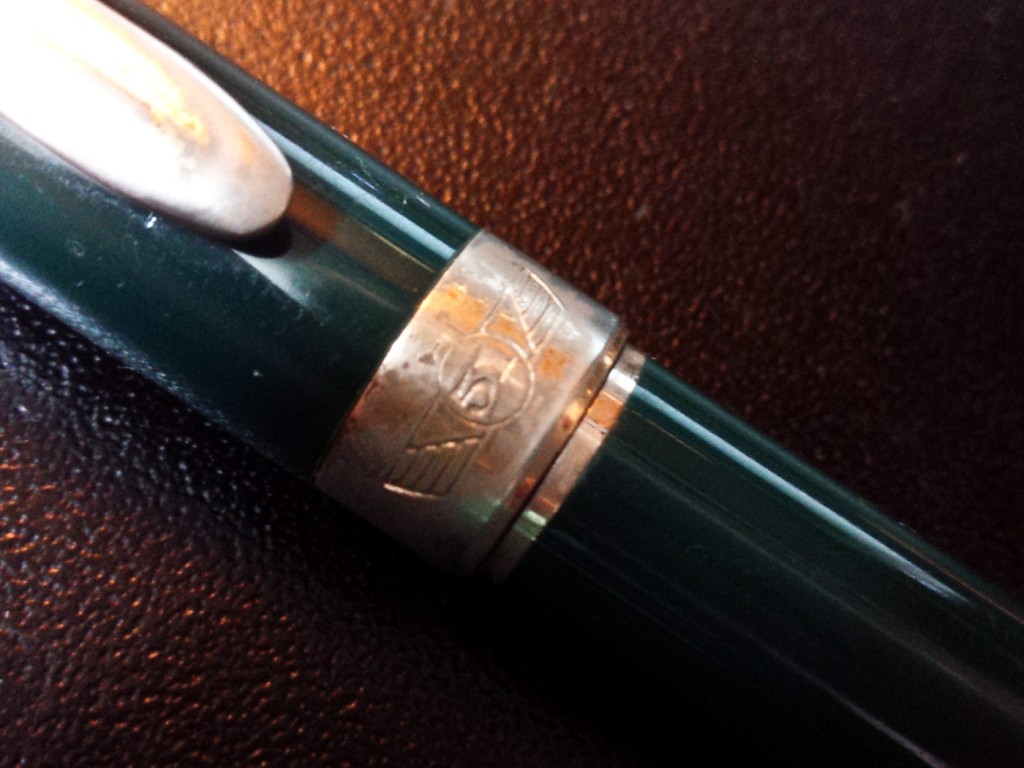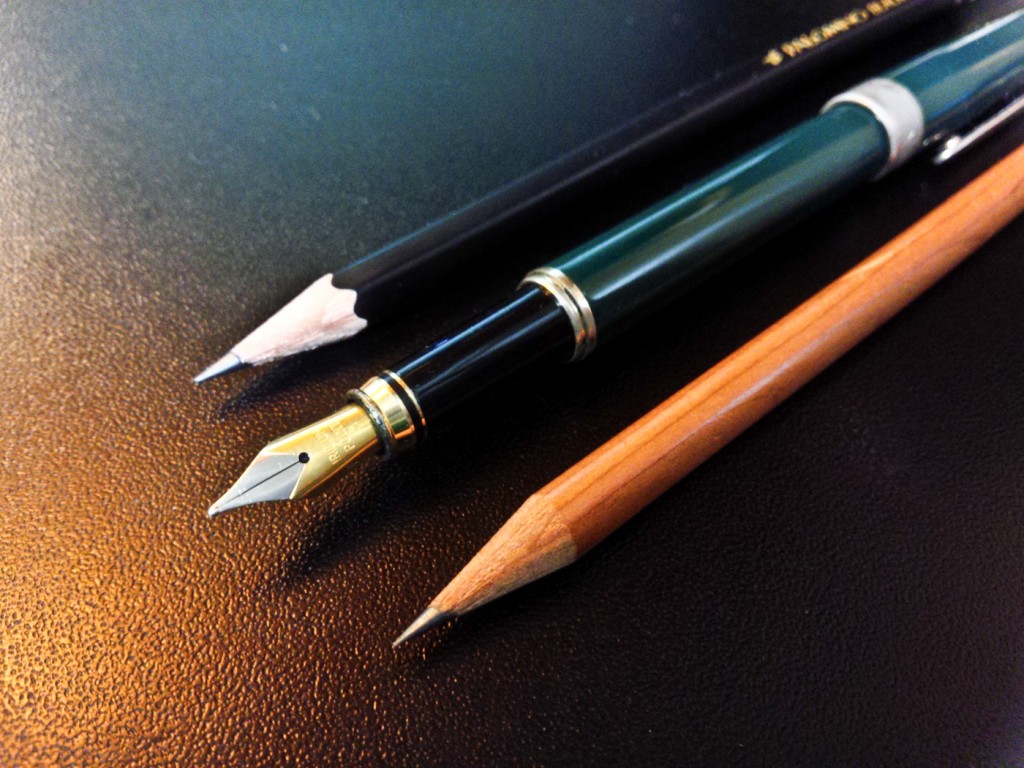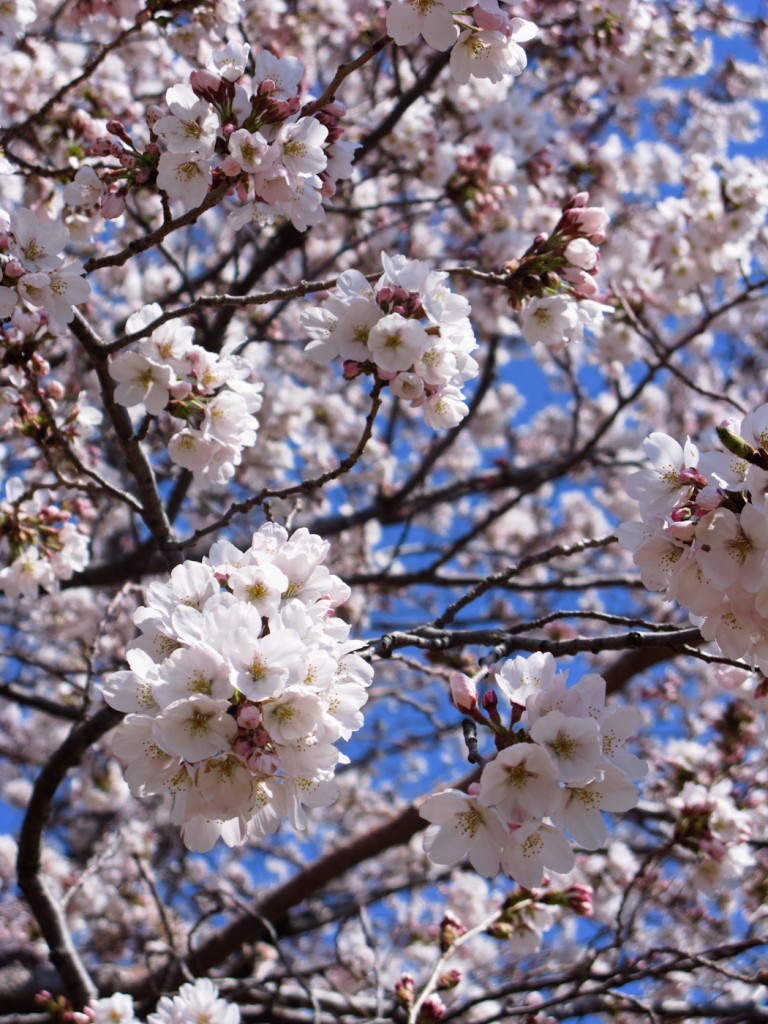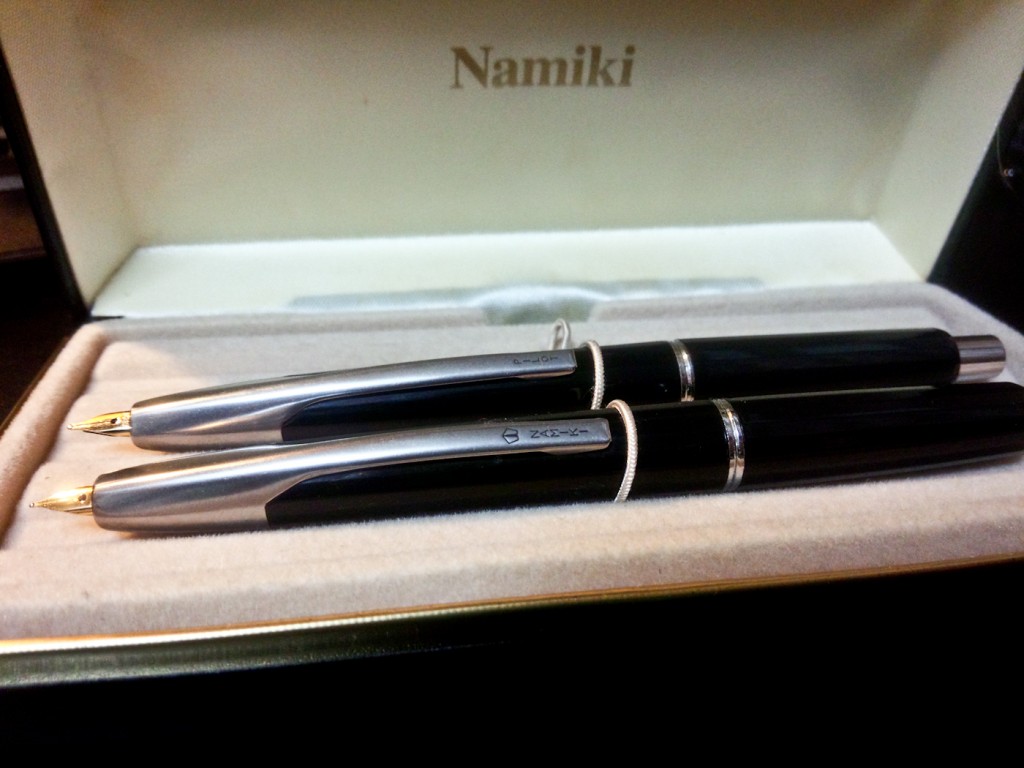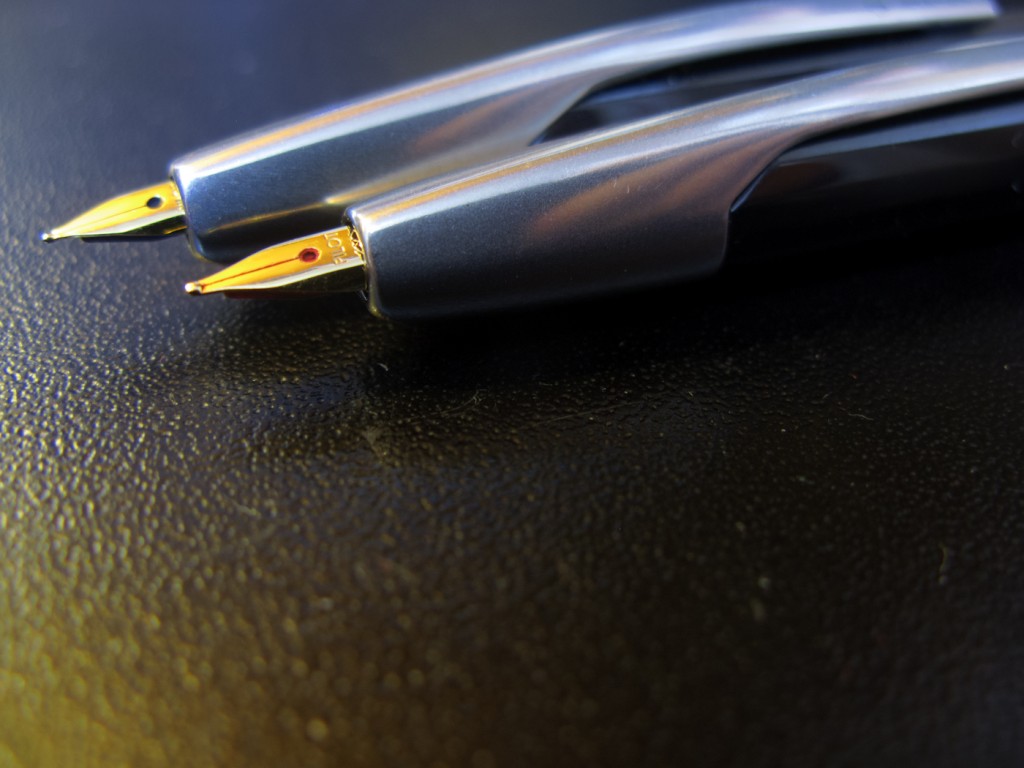I bought a pen in 1994 that I wouldn’t like very much until 2014.
Soon after I moved to Oxford, Mississippi to work on my Ph.D., an acquaintance of mine opened a shop that was way ahead of its time (i.e. doomed to fail) and featured items that wouldn’t be trendy for another ten to fifteen years.
I helped out by buying a dark green Retro 51 fountain pen. I liked the look and liked that it was heavier than my old Cross Century. The grip section wasn’t much thicker, but the barrel was and the extra weight made it much more comfortable to hold.
It turned out I didn’t like much else about the pen, though. The wood pen coffin it came in was cool, but it didn’t lock closed. If I grabbed the coffin incorrectly, I dumped the pen on the desk. I also didn’t like that it couldn’t hold two small standard international ink cartridges. (One installed, one backwards in reserve.)
Also, although the cap was apparently designed to be posted, it had to be pushed on hard to get it to stay. The cap flipped off several times when I was writing. Without the cap it was too small to use comfortably.
I could have forgiven that, though, if the nib had been better. I always found the steel M nib scratchy and dry. After several months of use and attempting to like it, I ended up switching back to my Cross Century (until I discovered the Pilot Vanishing Point).
Also, almost as soon as I started using it regularly, it got chips in the enamel paint, exposing the brass underneath. Even worse, the gold plating on the clip and the band started wearing off.
I stored the Retro 51 and almost literally let it rot as I didn’t bother cleaning it much before putting it in storage.
Me being me, I took it out of storage after 10 years or so and tried to use it. Me being me, I dropped it and left it with a nice hook style nib. Me being me I put it back in storage until I heard via the Pen Addict of a nibmeister named Mike Masuyama. Because I had another fountain pen/questionable purchase that needed nib work, I decided to send the Retro 51 along for repair. (More on the other pen in another post.)
Mike Masuyama did a great job on both pens and the Retro 51, after twenty years, finally entered my regular pen rotation.
Now, however, the pen is going back in storage. It’s too small to use for a long time and I have other pens I like better. I’m still annoyed it won’t carry two cartridges and that it won’t accept standard sized converters.
I may still have the annoying wood coffin, but I have no idea where it is. That’s also me being me.

